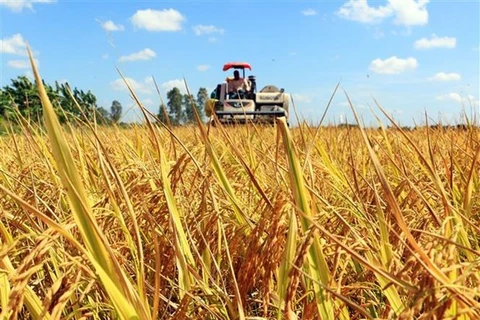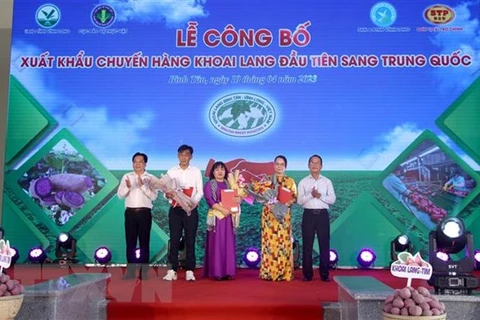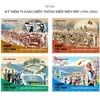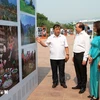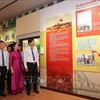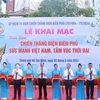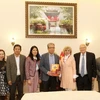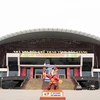Vinh Long (VNA) – The southern province of Vinh Long is located between the two big branches of the Mekong River - Tien Giang and Hau Giang.
For thousands of years, under the alluvial layer of the two rivers, deposits of rare and precious clay have been formed. They clay is the raw material to make red ceramic products, which Vinh Long is famous for.
The pottery village along Co Chien river is known as the kingdom of red ceramics with more than 1,000 mushroom-shaped pottery kilns, some of them are up to 12 metres high. At first glance, the village looks like an ancient city with red castles under the sun. The village has become a popular destination for tourists.
Red clay is only found in Vinh Long, mostly in its two districts of Long Ho and Mang Thit.
More than a century ago, Vinh Long people began to exploit clay mines on the banks of the Co Chien River to make brick, and from then the largest brick and tile-making village in the Mekong Delta formed.
The first kiln was built in 1887. Vinh Long's brick products were famous throughout the region for their distinctive characteristics: as solid as stone and a nice colour of red.
The quality of Vinh Long bricks was so famous that traders from as far as Thailand, Cambodia, and Malaysia came to buy them and used them to build religious works with original red rustic bricks.
Most of the temples and mansions in adjacent areas at that time such as Ben Tre, Dong Thap, My Tho, and Ha Tien, were also built with Vinh Long bricks.
In the 1980s, Vinh Long people began to produce civil and artistic ceramic products.
Visitors to the pottery village will be able to see with their own eyes the stages of making red ceramic products.
The raw clay is transferred from the boat to the workshop by conveyor belt and then sorted. Depending on the desired products, people mix the soil with different techniques which decides the success of the batch.
After mixing the clay, workers have to knead it many times until the clay turns smooth and non-stick to hands.
The next step is to cast the clay into molds, which is different from the normal way of shaping by hands. Ready-made molds made of gypsum are used.
The raw products after being taken from the molds will be refined and polished with a wet sponge. This stage makes the patterns and textures of the baked objects more meticulous and sophisticated and increases their value.
Finally the raw products are put into kilns. Firing temperature and firing technique are the most important in making pottery, thus requiring fire-adjusting workers to have years of experience.
Arranging products in the kiln is also important and arrangers must know where the flame is strong, weak, or stable to put suitable products.

Adjusting the flame in a kiln is an important step to decide the quality of the pottery product. (Photo: VNA)
Ceramics are baked in a kiln for seven days. For the first four days, products are dried with heat at temperatures from 100-200 degrees Celsius. From the fifth day on, the temperature is raised so that it reaches 900 degrees on the last day.
After that the kiln is left to cool down, then the products are taken out.
No need for colouring, the finished Co Chien ceramic has a very characteristic red colour. That’s the reason why Co Chien pottery village is well known as the "kingdom of red pottery."
Each year, more than 5 million ceramic products of all kinds are made in Vinh Long province, generating revenue of over 500 billion VND.
Pottery production has created jobs for tens of thousands of workers with stable incomes.
Vinh Long red ceramic products are now present in European, American, Australian, and Asian markets./.



